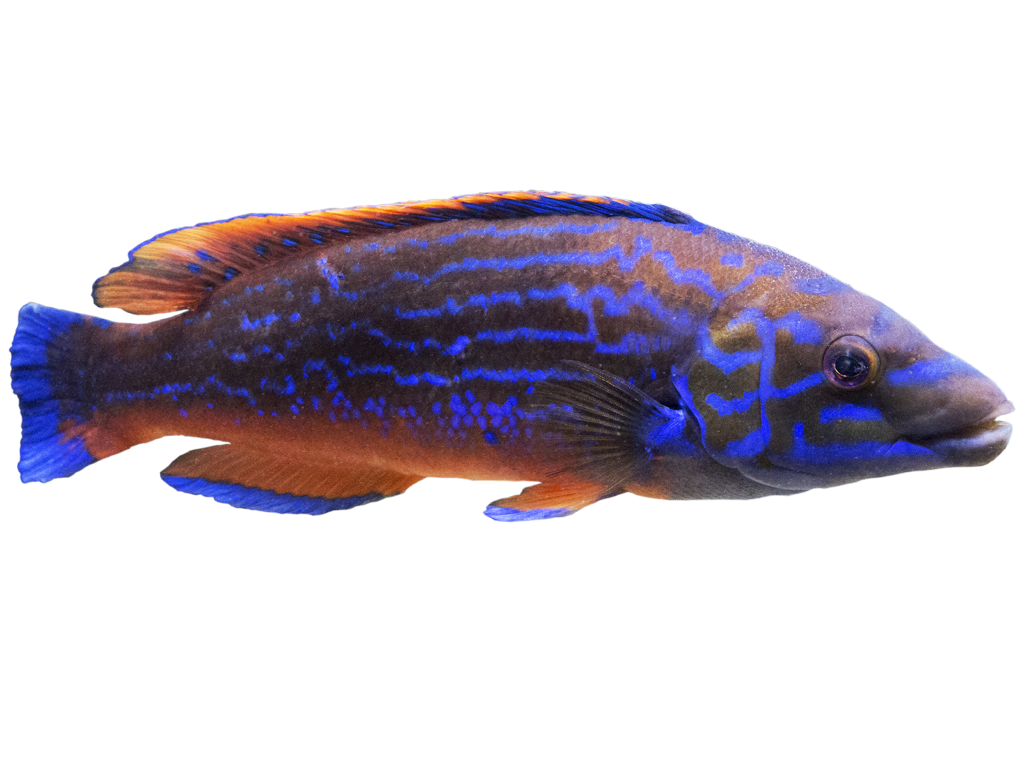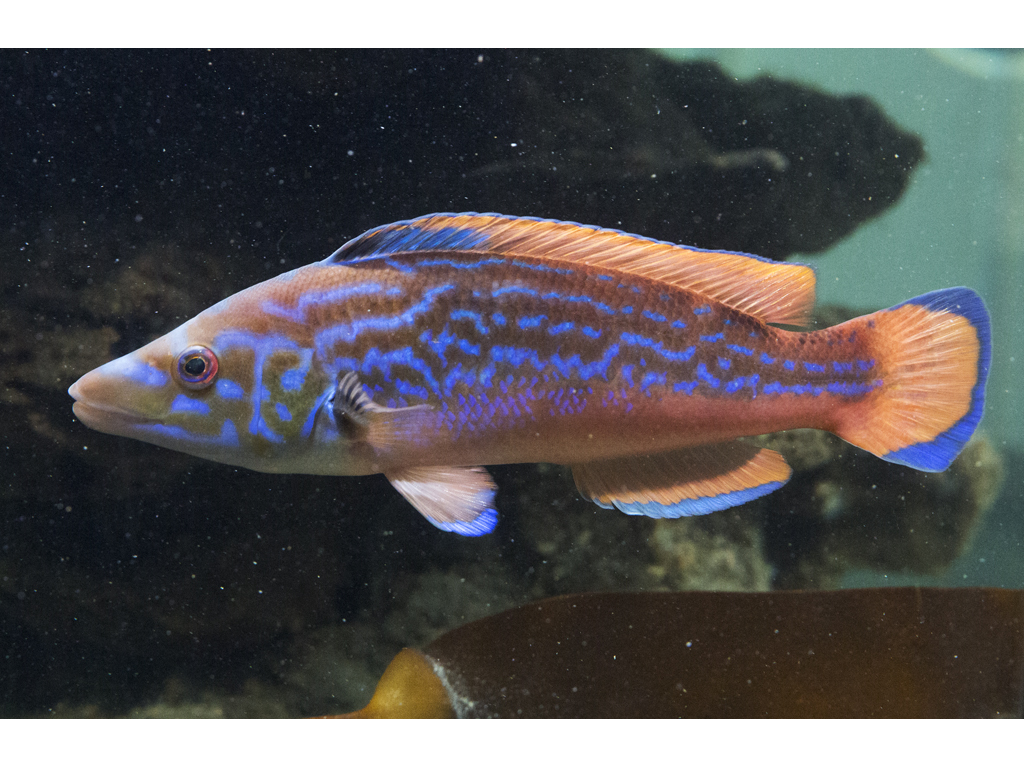Cuckoo wrasse
Labrus mixtus

Tropical-looking fish in Swedish waters
Almost all cuckoo wrasses are born female, pale pink, brown or beige in colour, with black spots at the lower part of their backs. The female cuckoo wrasse is called rödnäbba (red beak) in Swedish. The large males are beautifully coloured blue and orange, and their bright colours can really shine brightly. The males are called blåstråle (blue beam) in Swedish. It may be hard to imagine that such beautiful fish belong anywhere else than in the tropics, but the blue wrasse actually swims in Swedish waters as well!

Photo: Johanna-Rylander-Malmö-Museer
A male with up to 40 females
The cuckoo wrasse is a bottom-dwelling fish that usually lives at depths down to 80 metres, but out in the Atlantic there are groups of cuckoo wrasses that go down to depths of more than 200 metres, at least in winter. They like to stay in rocky coastal areas. The large males have big territories with up to 40 females. During the mating season, the male builds a pit in the sandy bottom for the females to lay their eggs in. When he has fertilised all the eggs, he guards them carefully until they hatch after about 10 days – then the young live in the open waters at first, before they find their way down to the bottom.

Photo: Diego-Delso-CC-BY-SA
Two different kinds of species turned out to be two different kinds of males
For a long time, it was believed that the cuckoo wrasse was actually two different species. There are two different types of males that are cuckoo wrasses. The male cuckoo wrasses – blåstråle in Swedish – are large, blue males, who were born as females but changed sex! These are called “terminal” males. However, a few cuckoo wrasses are born as males – so-called “primary” males. The primary males look like the females in colour and shape, which is why it was not previously thought that the blue males belonged to the same species as the females (rödnäbba in Swedish) and the primary males.
As long as there is a terminal (blue) male cuckoo wrasse in a territory, no female cuckoo wrasses will change their sex to male. If, on the other hand, the terminal (blue) male disappears for some reason, the largest and most dominant female in the territory will begin her transformation into a new blue male. It is only at the age of 7-13 years that it is possible for a female to become a blue male. The primary males, i.e. those that are born as males but look like females, will never become blue males. On the other hand, they can live as “infiltrators” in a group of females, and will take the opportunity to fertilise eggs when the territory’s terminal (blue) male is busy mating. In this way, both primary and terminal males of the cuckoo wrasse can pass on their genes.
Distribution worldwide
The west coast and sometimes down to Öresund.
White marking = Distribution

Threat based on the Red List

Trade regulations
CITES: Not listed.